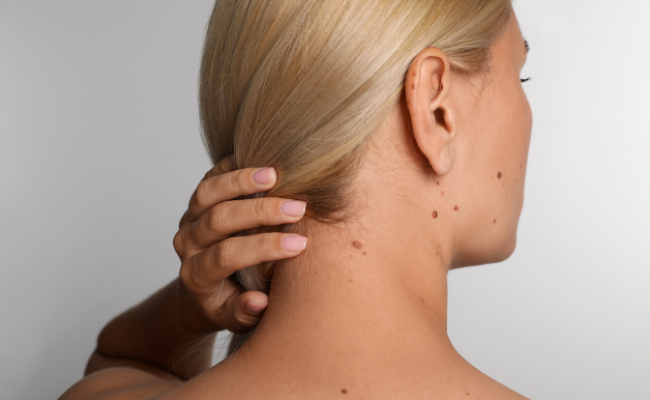How to Treat Birthmarks?
- November 10, 2023
- No Comments

What are Birthmarks?
Birthmarks, common skin abnormalities that may appear at or shortly after birth, can take various forms, such as discoloration, raised or flat areas, and textural irregularities. While most are benign and don't necessitate medical attention, some may opt for intervention for cosmetic or health concerns. A birthmark is a distinct spot or patch on the skin that differs in appearance from the surrounding skin. Typically present at birth, these marks vary in shapes and sizes. While some may naturally fade, others persist throughout life, unless removed. Generally harmless, certain birthmarks, like congenital nevi, may raise the risk of skin cancer. If you notice changes, consult a healthcare provider for evaluation and potential intervention.
Why do Birthmarks Occur?
The causes of birthmarks are diverse, and they can be broadly categorized into different types:
- Vascular Birthmarks: These birthmarks result from abnormal blood vessels near the skin's surface.Examples include "salmon patches" or "stork bites" and hemangiomas.Hemangiomas are growths of blood vessels and may appear as raised, red, or bluish marks.
- Pigmented Birthmarks: Caused by an overgrowth of pigment cells.Examples include moles, cafe-au-lait spots, and Mongolian spots.Moles are clusters of pigment cells that often appear as dark, raised marks.
- Congenital Moles: These are dark, raised marks that are present at birth. Congenital moles can vary in size and may require monitoring for changes over time.
How to Treat Birthmarks?
The approach to treating birthmarks depends on the type, size, and location of the mark. While some birthmarks may not require intervention, others may benefit from medical evaluation and various treatment options:
- Observation: Many birthmarks, especially those that are small and don't pose health risks, may not require treatment.Regular observation by parents and healthcare professionals is often recommended.
- Medical Evaluation: Consulting a dermatologist or healthcare professional is crucial for evaluating the type and potential risks associated with the birthmark.Some birthmarks may require monitoring, while others may benefit from intervention.
- Laser Therapy: Laser treatments are effective for certain types of birthmarks, particularly vascular ones.The laser targets blood vessels or pigment cells, reducing the appearance of the birthmark.Multiple sessions may be needed for optimal results.
- Topical Medications: For pigmented birthmarks, such as cafe-au-lait spots, topical medications may be prescribed.These medications aim to lighten or shrink the birthmark over time.
- Surgery: Surgical removal is an option for specific birthmarks, especially if they pose a risk of complications or cause psychological distress.Surgical procedures may include excision or laser surgery.
- Cryotherapy: Cryotherapy involves freezing the birthmark with liquid nitrogen.This method is commonly used for small, raised birthmarks.
Treatment Solutions for Different Birthmarks:
- Port Wine Stains: Laser therapy is often the preferred method for treating port wine stains.The laser targets blood vessels, reducing the redness associated with these birthmarks.Multiple sessions may be required for optimal results.
- Hemangiomas: Depending on the size and location, some hemangiomas may resolve on their own.Others may require medications like beta-blockers or corticosteroids to shrink the birthmark.
- Moles: Congenital moles may be monitored for changes over time.If necessary, surgical excision is a common method for removing moles.
- Cafe-au-Lait Spots: These pigmented birthmarks may be observed, but if necessary, treatment options like laser therapy or topical bleaching agents may be considered.
Benefit Points of Birthmark Treatment:
- Cosmetic Enhancement: Treatment options can enhance the cosmetic appearance of the skin, providing individuals with increased confidence and improved self-esteem.
- Prevention of Complications: Intervention may be crucial for birthmarks that pose health risks, preventing potential complications such as infections or vision impairment.
- Psychological Well-being: For individuals with birthmarks that cause emotional distress, treatment can contribute to improved mental health and well-being.
- Early Detection of Issues: Regular medical evaluation ensures the early detection of any changes in the birthmark, allowing prompt intervention if necessary.
- Reduced Health Risks: Addressing certain types of birthmarks, such as hemangiomas, can reduce the risk of associated health issues and complications.
- Enhanced Quality of Life: Treatment solutions contribute to an improved quality of life for individuals with birthmarks, addressing both cosmetic and health-related concerns.
Comments (0)